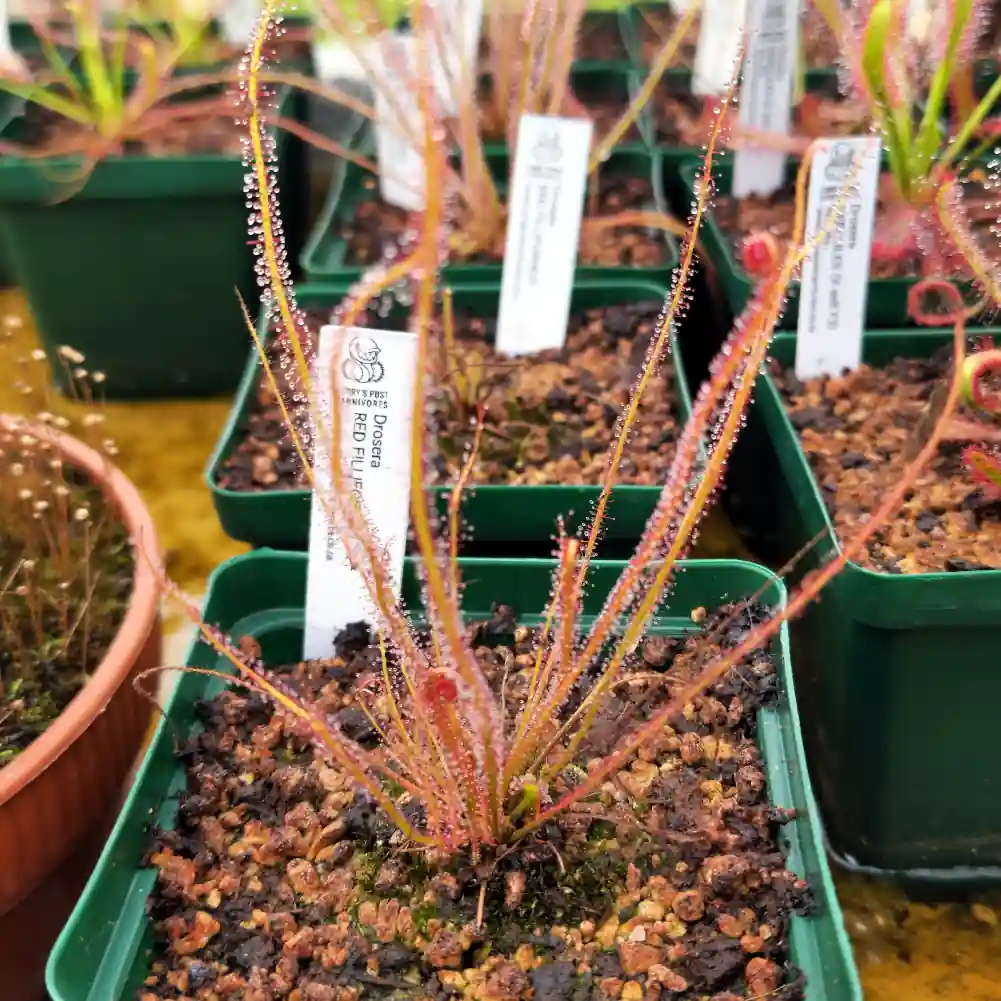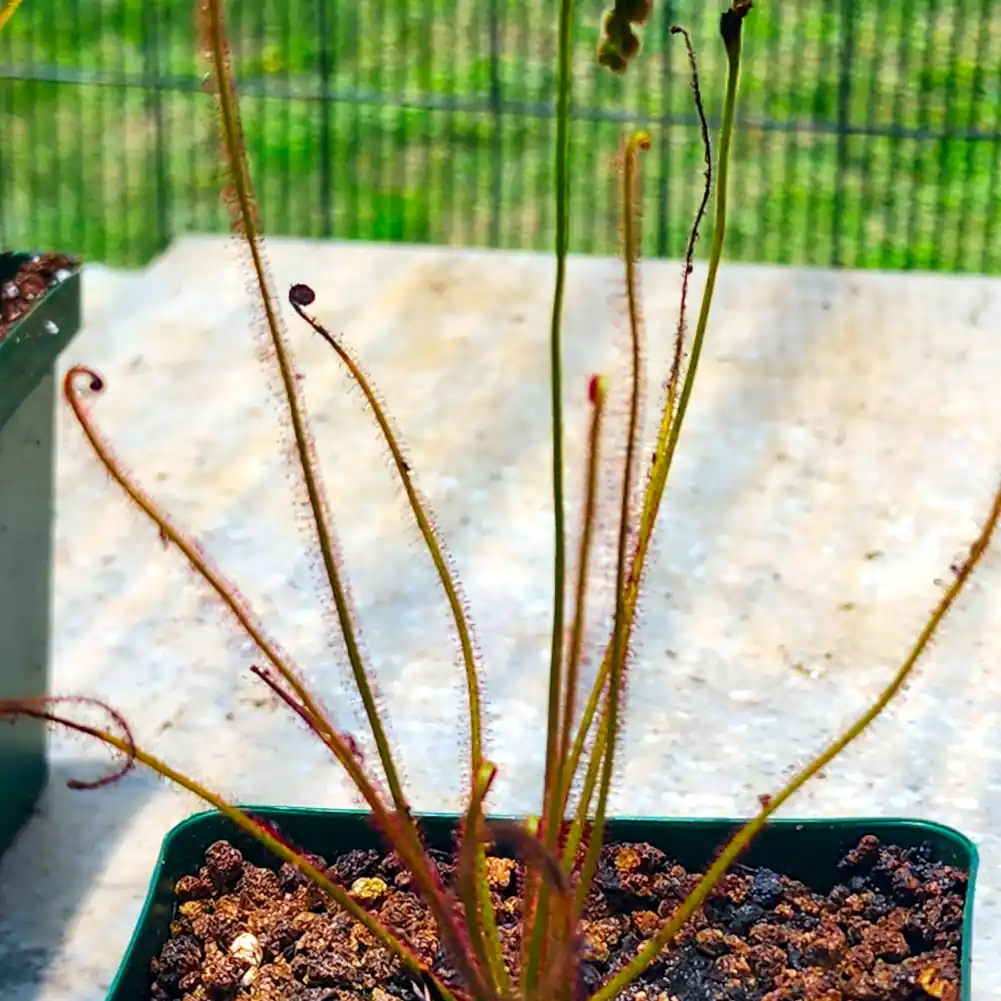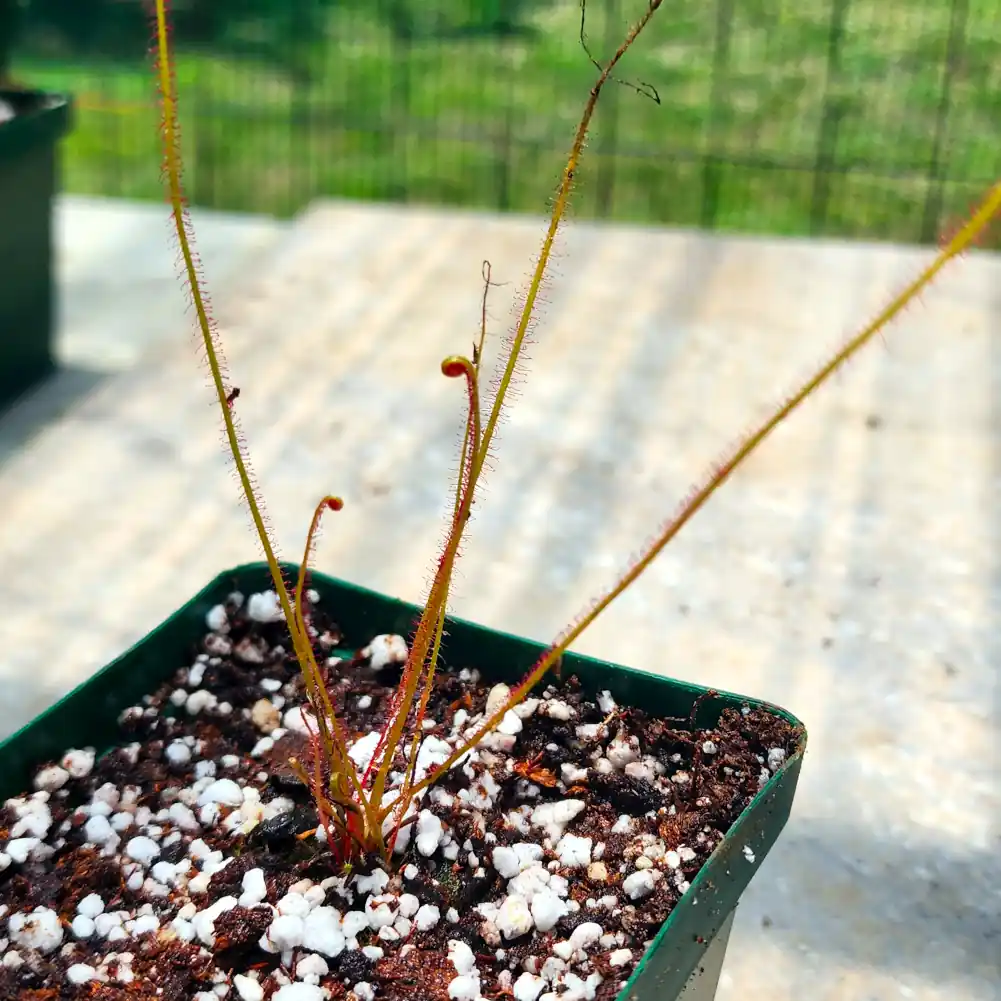Description
Sundews are relatively easy to care for so they are great for beginners. They are fascinating hunters, producing a glistening sticky dew on the leaves, which lure insects. When they land, they get glued to the leaf, and this glue starts to digest the insect. Cape Sundews are unique in that they curl their leaves around their victim enlarging the digestive area and digesting the prey much quicker.
Basic Growing Guidelines:
Light: Drosera needs FULL to PART sun. The more light they get, the more intense the colouring will be, and the more dew they will produce. Try to avoid the peak afternoon sun though.
Soil: Our standard carnivorous soil mix is ideal for this plant. (1 part peat to 1 part perlite.)
Feeding: You can supplement feeding with live flies, bugs, or crushed fish food flakes. A weekly spray of a light foliar fertilizer will also benefit the plant.
Humidity: 50 to 60% on average is ideal.
Water: Keep the soil wet using the tray method but never let the water level get higher than 1/4 of the pot height. Use Reverse Osmosis, Distilled or Rain Water Only.
Temperature: Sundews can tolerate very high temperatures, however, dew production will stop if the plant gets too hot.
Dormancy: Filiformis will produce a rosette of smaller leaves during winter to protect itself from freezing by exposing less leaf surface. Like the Pine Trees do with their thin needle leaves. The central part of the rosette stays alive while all the rest turns brown.
A summary of plant care is provided with each plant.
For more detailed information on how to care for your plant, refer to our Care Guides Section.









